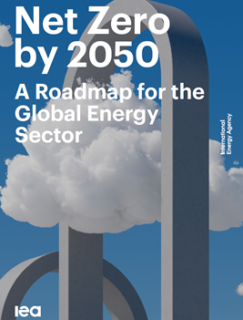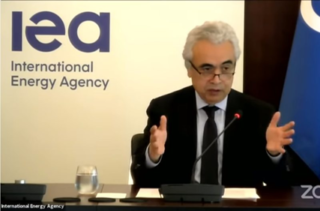-
IEA reports on pathway to global net-zero greenhouse gas emissions by 2050
Date posted:
-
-
-
Post Author
Greg Kelsall
-
-
![]()
The world has a viable pathway to building a global energy sector with net-zero carbon dioxide emissions in 2050, but it is narrow and requires an unprecedented transformation of how energy is produced, transported and used globally, the International Energy Agency (IEA) has announced recently.
Current climate pledges by governments, even if fully achieved, would fall well short of what is required to bring global energy-related carbon dioxide emissions to net zero by 2050 and limit the global temperature rise to 1.5 °C, according to the roadmap. This sets out a cost-effective and economically productive pathway, resulting in a clean, dynamic and resilient energy economy dominated by renewables rather than fossil fuels. The report also examines key uncertainties, such as the roles of bioenergy, carbon capture and behavioural changes in reaching net zero.
It calls for no investment in new fossil fuel supply projects and no further final investment decisions for new unabated coal plants. By 2035, there are no sales of new internal combustion engine passenger cars, and by 2040, the global electricity sector has already reached net-zero CO2 emissions.
In the near term, the report describes a net-zero pathway that requires the immediate deployment of all available clean and efficient energy technologies, combined with a major global push to accelerate innovation. The pathway calls for annual additions of solar PV to reach 630 GW by 2030, and those of wind power to reach 390 GW. Together, this is four times the record level set in 2020. For solar PV, it is equivalent to installing the world’s current largest solar park roughly every day. A major worldwide push to increase energy efficiency is also an essential part of these efforts, resulting in the global rate of energy efficiency improvements averaging 4% a year through to 2030, which is about three times the average achieved over the last two decades.
![]()
IEA Executive Director Fatih Birol leading the report release on 19th May
Most of the global reductions in CO2 emissions between now and 2030 in the net-zero pathway come from technologies readily available today. However, in 2050 almost half the reductions come from technologies that are currently only at the demonstration or prototype phase. This requires governments to quickly increase and reprioritise their spending on research and development, as well as on demonstrating and deploying clean energy technologies. Areas seen as having a particular impact are advanced batteries, electrolysers for hydrogen and direct air capture and storage.
Providing electricity to around 785 million people who have no access to it and clean cooking solutions to 2.6 billion people who lack them is an integral part of the roadmap’s net-zero pathway. This would costs around US$40 billion/year, equal to around 1% of average annual energy sector investment. It also brings major health benefits through reductions in indoor air pollution, cutting the number of premature deaths by 2.5 million a year.
Total annual energy investment is proposed to increase significantly to US$5 trillion by 2030, adding an extra 0.4 percentage points a year to global GDP growth, based on a joint analysis with the International Monetary Fund (IMF).
By 2050, the energy world looks completely different. Global energy demand is around 8% smaller than today, but it serves an economy more than twice as big and a population with 2 billion more people. Almost 90% of electricity generation comes from renewable sources, with wind and solar PV together accounting for almost 70%. Most of the remainder comes from nuclear power. Solar is the world’s single largest source of total energy supply. Fossil fuels fall from almost four-fifths of total energy supply today to slightly over one-fifth. Fossil fuels that remain are used in goods where the carbon is embodied in the product such as plastics, in facilities fitted with carbon capture, and in sectors where low-emissions technology options are scarce.
The special report is designed to inform the high-level negotiations that will take place at the 26th Conference of the Parties (COP26) of the United Nations Climate Change Framework Convention in Glasgow, UK, in November. It was requested as input to the negotiations by the UK government’s COP26 Presidency.
Response to the report has been mixed, attracting broad support although it has drawn some comments/reactions. One such reaction from Euractiv related to the extent of bioenergy use, noting that whilst environmentalists applauded the findings, they also warned against some of the assumptions in the scenario, which posit growing shares of biomass used for energy. The IEA’s Net Zero Emissions scenario foresees a 60% growth in bioenergy use to reach 104 exajoules by 2050, up from 65 exajoules in 2020. According to the IEA, the total land area devoted to bioenergy production would need to increase by 25% to reach 410 million hectares in 2050, an area the size of India and Pakistan combined. This would be taken from “marginal land” which is currently not productive, the IEA said, an assumption that leaves environmentalists sceptical. “We need forests and land to capture carbon, not to release it into the atmosphere and accelerate global warming,” said Dr Mary S Booth, director at the Partnership for Policy Integrity, a US-based research group.


